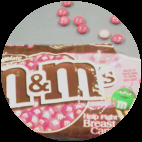
JourneyCare Hospice Volunteer, Mary McArthur
Nurturing Moments Through the End of Life
Like so many people facing an empty nest, Mary McArthur sought something to keep her busy as her children flew away to live their own lives. When her youngest went away to college in 2006, it was time for Mary to do something for herself – and that something was hospice volunteering.
Her mother had passed away young; Mary was only 22 at the time, and, in 1976, hospice was not a presence yet in the U.S. Then, over the years, Mary helped many friends and family members who died with hospice at their side, and she saw firsthand what a difference hospice made in the end-of-life journey. Along the way, she read a most moving article in the Chicago Tribune by Dr. Martha Twaddle, a leader in the Palliative Care and Hospice field, and the medical director for a local hospice organization. It was then that Mary realized she felt compelled to work in the hospice arena. Dr. Twaddle emphasized that hospice care was, most of all, about simply being present during the transition from life to death.
Once Mary’s patient care volunteer training was complete, she began her patient assignments with another new volunteer as her partner. They both found it helpful to bounce ideas off of one another as they absorbed the scope of this powerful ministry. She learned early on that many patients are grateful for hospice team members who “get” that their life is ending at a time when many family members just aren’t ready to embrace that reality yet. She helped her patients realize that though death was coming, there could still be joy.
She noted, “this is what the reality/inevitability is, but it can still be great. Let’s help you live until you don’t.”

Grateful for Life’s Simple Pleasures
Through her time as a hospice volunteer, Mary has found many rewards gained from her experience, including a renewed appreciation for the simple things. She learned just how often we take a functioning body for granted. So many patients are upset by the loss of functioning they experience at the end of life; Mary has learned to truly be grateful for something as simple as the ability to walk, talk, or even breathe on her own. In fact, when a day passes that is quite uneventful, it’s cause for celebration.
Speaking of celebration, she urges her patients to “seize the day” as much as possible. To facilitate this, Mary came up with the genius idea of searching for wacky holidays. Every day seems to have a theme – National Peanut Butter Day, National Candle Day, you name it, you can find it with a quick internet search. Mary likes to walk into the patient’s room and tell them about whatever National Day it might be. That sparks conversations and offers the opportunity to enjoy light-hearted moments that stem from that.
Mary has also learned that silence truly is golden. It is important for a volunteer to feel comfortable with silence, to reassure the patient that they needn’t entertain the volunteer. The hospice volunteer can simply sit in the room and be present, simply there if the patient needs anything, and nothing more. That can be quite comforting for patients and for the volunteer, too.
“Silence can be a blessed thing,” Mary said.
On a practical level, hospice care has taught Mary what she wants her own end to be like, for herself and for her family. Mary was asked to sit with a patient for a while so his family could go to the funeral home and make arrangements for his burial at the very end of his life when the family was so very fragile. Upon seeing the grief and difficulty the family endured in making those decisions, Mary knew she didn’t want her children to go through that kind of crisis. She made the decision right then to get cemetery plots for her and her husband while she is in good health.

Never too Late for “Firsts” in Life
So many patients have made their mark in Mary’s life and she recalled a few touching stories. One of these happenings occurred shortly after Halloween, Mary went into a patients’s room and presented her with M&Ms from a Halloween basket. Amazingly, the woman had never tasted M&Ms! She had grown up in Hershey, PA, and M&Ms were not a Hershey’s product, so they weren’t as common as other candies were. Of course the woman loved her first taste of M&Ms, and Mary began bringing her all different types for the seasons, such as red and green Christmas M&Ms or pastel Easter M&Ms. Something as simple as a tiny M&M candy was enough to brighten the patient’s days.
Mary has also learned to never discount how much a patient really knows, especially those who are suffering from dementia or Alzheimer’s. One of her patients, who seemed to be far into the grip of Alzheimer’s, was taken down to a short prayer service. He was declining rapidly, so no one expected him to speak. But when the Lord’s Prayer began, the patient knew every word.
Another memorable moment happened when Mary and a patient watched the Chicago Cubs. The man had Parkinson’s and dementia, and he could no longer speak. She told the patient they could sing Take Me Out to the Ballgame during the seventh inning stretch. The man’s son later joined them to watch the game, and sure enough, when the seventh inning stretch came and Mary began to sing, the patient did, too. The son was so moved that he burst into tears. The power of music allowed his dad to ‘come back’ for one priceless, cherished moment.
Anyone who works in hospice care gains an up-close-and-personal relationship with patients and with death itself. Mary gained a unique perspective when dealing with a patient who was very close to the end of her life. The patient was frightened of what was to come. But her faith was strong, so her Chaplain asked: “Aren’t you just a little bit curious?”
And sure enough, the woman could admit that yes, she was. Mary found those words and that admission quite comforting, and the patient did, too.
Mary also gained unique perspective from Dr. Twaddle. A patient had just passed away, and Dr. Twaddle stopped by the room to pay her respects. She pointed out the profound silence. It was an affirming kind of stillness. When the family said that there was no way they could have gotten through this without hospice, the team’s response was, “It takes a village to birth a child. It takes a village to raise a child. There is no reason in the world it shouldn’t take a village to escort a person out of this life.”
“There are worse things than dying,” Mary said.
One special practice Mary created for herself is to remember that when a life is over, the patient is not forgotten. Mary writes to the family after the patient’s death, recalling something good she observed about the patient or about the family member’s interaction with them during those last days.
Her remembrance doesn’t stop there. When the patient’s birthday rolls around, Mary recognizes the importance of it for the surviving family. That’s the first year the family didn’t need to buy a card or plan a celebration of some kind – that in and of itself can be quite painful. Mary sends a note on the birthday, remembering their lost family member.
And at the one-year anniversary, she makes it clear she remembers their loved one. “I am thinking of you on this day” written in a card is a simple sentiment that means so much to those who are left behind.
Summarizing, Mary often says that in hospice patient care, we are in the affirmation business. By listening to a patient, or their family, about what makes a patient “tick”, a wise volunteer can speak to the gifts that patient brought to our world. Whenever possible, Mary tries to be sure the patient knows that they have taught her something during their visits, making them vital at a time when many patients feel they’ve little left to give.
“I feel strongly about that,” Mary said. “Because I think most of us, before our life ends, most of us want to feel like ours was a life well lived.”
RelatedWeb Links
Volunteers Learn End of Life Transition
This is Why Hospice Work is so Fulfilling
- Remember the power in moments.
- Practice gratitude for the simple things in life.
